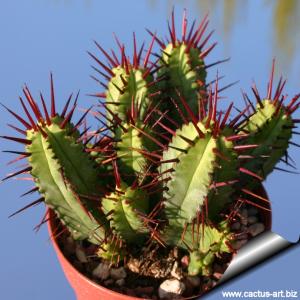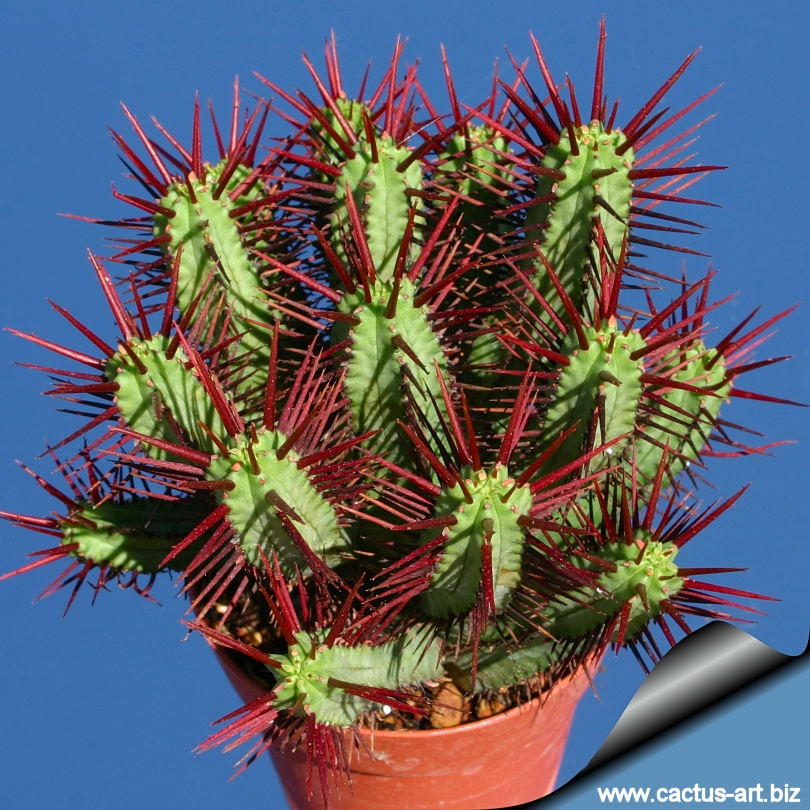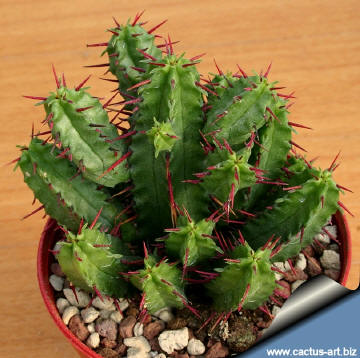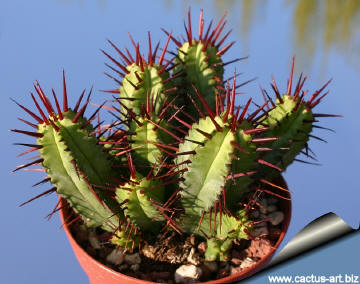-
x
Description
|
Beautiful plant with lovely red spines. it is very popular and easy to grow. It can form soon a large bunch. It isn't an actual cactus, but it looks a lot like one.
Family: Euphorbiaceae Scientific name: Euphorbia enopla Boiss. Origin: South-western South Africa. Conservation status: Listed in CITES appendix 2. Common Name: Pincushion Euphorbia E. enopla belongs to Euphorbia section 19 along with E. aggregata, mammillaris, anoplia, ferox, heptagona, pentagona and polygona which are all similar in form. In particular E. enopla looks a lot like E. ferox, but E. ferox is much fatter.
|
|
|
|
|
|
|
Description: It’s a heavily branching dioecious succulent shrub that grow to about 30-100 cm, much branched from the base, profusely covered with thick, prominent lovely long red spines.
Cultivation: Common and relatively easy to grow plant for pot culture. It grows well in a very draining mineral potting substrate, but it isn't picky about soil. The area where this plant is native receives rains both in winter and summer, so it can be watered moderately all year around (except in the coldest month of the winter, as it rot easily ,especially if over-wet). During the summer, they enjoy average feeding and watering. When dormant in winter, keep it totally dry at or around 4°C, even though it seems to tolerate light frosts well. Mature healthy plants are tough and can also be grown outside where frost is not too severe, but when left out it is more sensitive to frost. They do need a lot of light to keep their compact growth-form, but different clones vary in their tolerance of full sunshine. The plants that are not kept in full sun grow faster, but became untidy and may need support as they get larger, or branches fall off. But if grown in the protection of light shade, the thick purple spines of this low-growing clumping columnar plant have the best colour. Sometimes, in really hot full sun all day long, a plant will bleach out a bit. It soon grows into a large, many stemmed specimen, and it can fill a 30 cm bowl. It is also a prolific bloomer, and makes a spectacular specimen.
Propagation: It is propagated by cuttings or seeds. It branches enthusiastically, and offsets are readily available. If you remove an offset, remember to let it dry for a week or so, letting the wound heal (cuttings planted too soon easily rot before they can grow roots). It is better to wash the cut to remove the latex. The seed can be sown just under the surface in normal seedling trays in a sandy seed mix. Germination usually occurs within 1 - 3 weeks.
|
|
|
|




